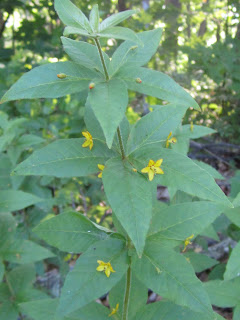Rain and warmer weather are closely followed by increases in mosquito activity particularly
with the Asian tiger mosquito. Most people still think of swamps, ponds, etc. as the source of
the mosquitoes that show up in their yards. However, in most residential areas the source is
more likely to be all of those small and inconspicuous water sources that are prime mosquito
breeding sites. So, before people start planning a chemical assault on their yards as the solution to their mosquito problems, they should start with the simpler and more long-term approach of eliminating "collectibles". We don't mean souvenirs; we're talking about all of those objects that collect and retain rainwater.
- Bird baths - simply flush them out with a garden hose. The birds will also appreciate the fresh water. For horse owners with water troughs near stalls or out in pastures, one option is to use a product such as "Mosquito Dunks" which contain the 'Bacillus thuringiensis israelensis' and are labeled for use in animal watering containers. Although you can use them in water bowls for dogs, it is far simpler (and better for the animals) if you 'tip and toss' the water and replenish it with fresh water.
- Old cans, tires, etc. - empty them and get rid of them.
- Outdoor flower pots - empty the water from the dishes/trays underneath them. Your plants have plenty of water without the overflow. This also helps reduce fungus gnat problems.
- Remove all of that built-up debris from your gutters. The water and decaying material attract mosquitoes
- Tarps covering boats, your grill, etc. collect pockets of water that can remain for 1-2 weeks.
- The bed of that '57 Ford pickup that you've been restoring for the last 15 years can collect water particularly if the tailgate faces uphill in your yard.
- Kids' pools - if they're not being used by kids, they're probably being used by the mosquitoes. Same thing applies to pools (inground or aboveground) that aren't maintained (such as on properties in foreclosure).
- Drainage ditches - they're meant to collect water *temporarily*. Keep them free of debris so
that water flows out.
- Decorative fish ponds can be a source of mosquitoes if they contain a lot vegetation which
provides hiding places for the mosquito larvae. 'Mosquito Dunks' are an option here.
- Tree holes - When limbs fall off trees, the remaining hole in the trunk can collect water. Flush that out or put a small piece of a mosquito dunk into it.
Many people ask about treating shrubs in their yard. Mosquitoes *may* be resting there during the day but whether it "controls" a mosquito problem is debatable. Similarly, people that use outdoor foggers will definitely kill mosquitoes but depending on the time of day/evening that they use it, they may be missing the peak activity. Two other issues about using outdoor foggers are important. First, safety is critical. Make sure you're standing upwind from the direction the fog is being applied and wear appropriate protective equipment to prevent the fog from getting into your eyes and lungs or on your skin. Second, know where the fog is going. Some of your neighbors may not want chemicals drifting onto their property (particularly if they're outside eating at the time!) Same thing applies to the automated misting systems that some people have installed on their homes.
One other point to remember - mosquitoes have no concept of property lines. Mosquito
management takes a neighborhood effort to be truly effective.
More information on the web at: http://insects.ncsu.edu/Urban/mosquito.htm
Written by: Mike Waldvogel and Charles Apperson, Extension Entomology, NCSU












